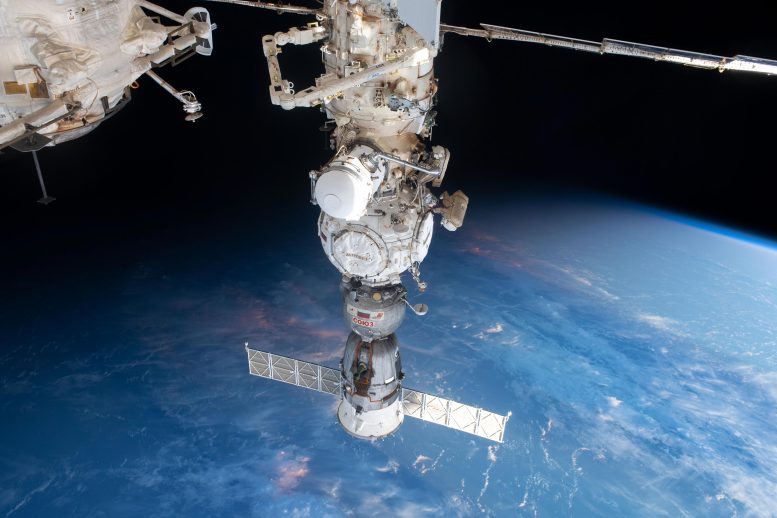
Cosmonauts Sergey Prokopyev and Dmitri Petelin work outside the International Space Station to deploy and activate a radiator on the Nauka multipurpose laboratory module during a five-hour and 14-minute spacewalk on May 12, 2023. From top to bottom, the main station elements are Nauka with the European robotic arm and an experiment airlock attached, the Prichal docking module, and the Soyuz MS-23 crew ship. Credit: NASA
Today the Expedition 69 ISS crew conducted various science experiments, prepared for the Ax-2 private mission, maintained lab systems, and practiced emergency protocols.
The Expedition 69 crew spent Wednesday, May 17, servicing an array of science gear, maintaining orbital lab systems, and readying gear for the next private astronaut mission. The International Space Station (ISS) crew members also joined each other at the end of the day and practiced responding to a variety of emergency scenarios.
NASA Flight Engineers Frank Rubio and Woody Hoburg worked during the morning on science hardware supporting different space biology experiments. Rubio uninstalled video components inside the Cell Biology Experiment Facility, a research incubator that generates artificial gravity. Hoburg deployed a computer on the Tranquility module’s life support rack before ground controllers loaded network security software into the device.
Rubio later joined UAE (United Arab Emirates) astronaut Sultan Alneyadi and returned the station’s Treadmill 2 to its normal configuration inside Tranquility. Alneyadi and Hoburg had worked the day before on the treadmill rotating it out of its stowage position to inspect and clean its electronic components.
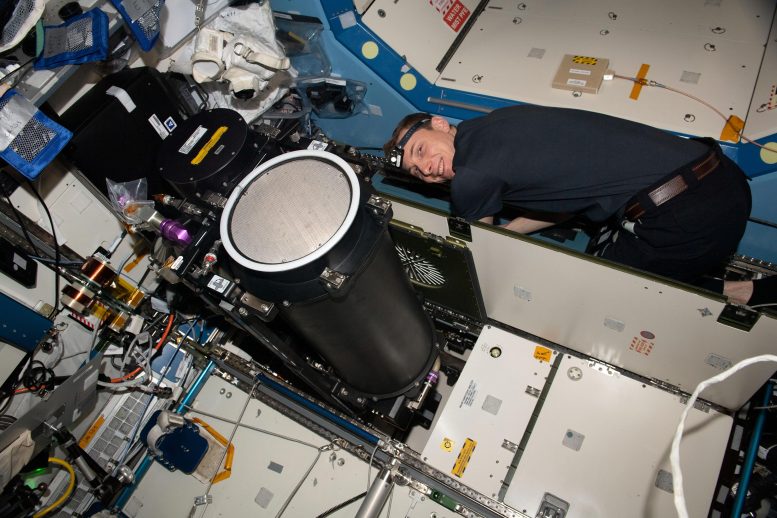
NASA astronaut and Expedition 69 Flight Engineer Woody Hoburg works inside the International Space Station’s Destiny laboratory module and replaces life support system components. Credit: NASA
NASA Flight Engineer Stephen Bowen swapped out pharmaceutical samples inside the Microgravity Science Glovebox for the Ring Sheared Drop experiment that seeks potential treatments for neurodegenerative diseases. He also removed a vest and headband he was wearing that recorded his vital signs and prepared the medical data for review by doctors on the ground.
Bowen also prepared computer tablets that will be used during the upcoming Axiom Mission-2 (Ax-2). Bowen configured the devices to allow the Ax-2 crew to access ground resources and connect to the internet. Ax-2 will be commanded by former NASA astronaut Peggy Whitson who will lead first-time space flyers Pilot John Shoffner and Mission Specialists Ali Alqarni and Rayyanah Barnawi. The private quartet is scheduled to launch aboard the SpaceX Dragon spacecraft at 5:37 p.m. EDT on Sunday from NASA’s Kennedy Space Center and automatically dock to the orbiting lab at 9:24 a.m. on Monday.
Commander Sergey Prokopyev and Flight Engineer Dmitri Petelin worked throughout Wednesday on life support maintenance before partnering together and testing ultrasound gear for a human research study. Flight Engineer Andrey Fedyaev spent his day inspecting surfaces inside the Roscosmos station modules.
At the end of the day, all seven crewmates joined each other for a regularly scheduled emergency training session. The orbital residents reviewed how they would coordinate their response to unlikely emergency events such as a fire, an ammonia leak, or a pressure leak. They familiarized themselves with escape routes, safety gear, and communication protocols with mission controllers.


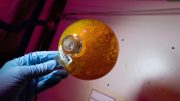


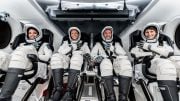
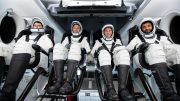
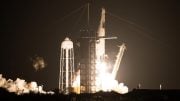
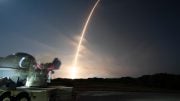
Be the first to comment on "Astronauts Conduct Space Biology Experiments Before Emergency Training Session"